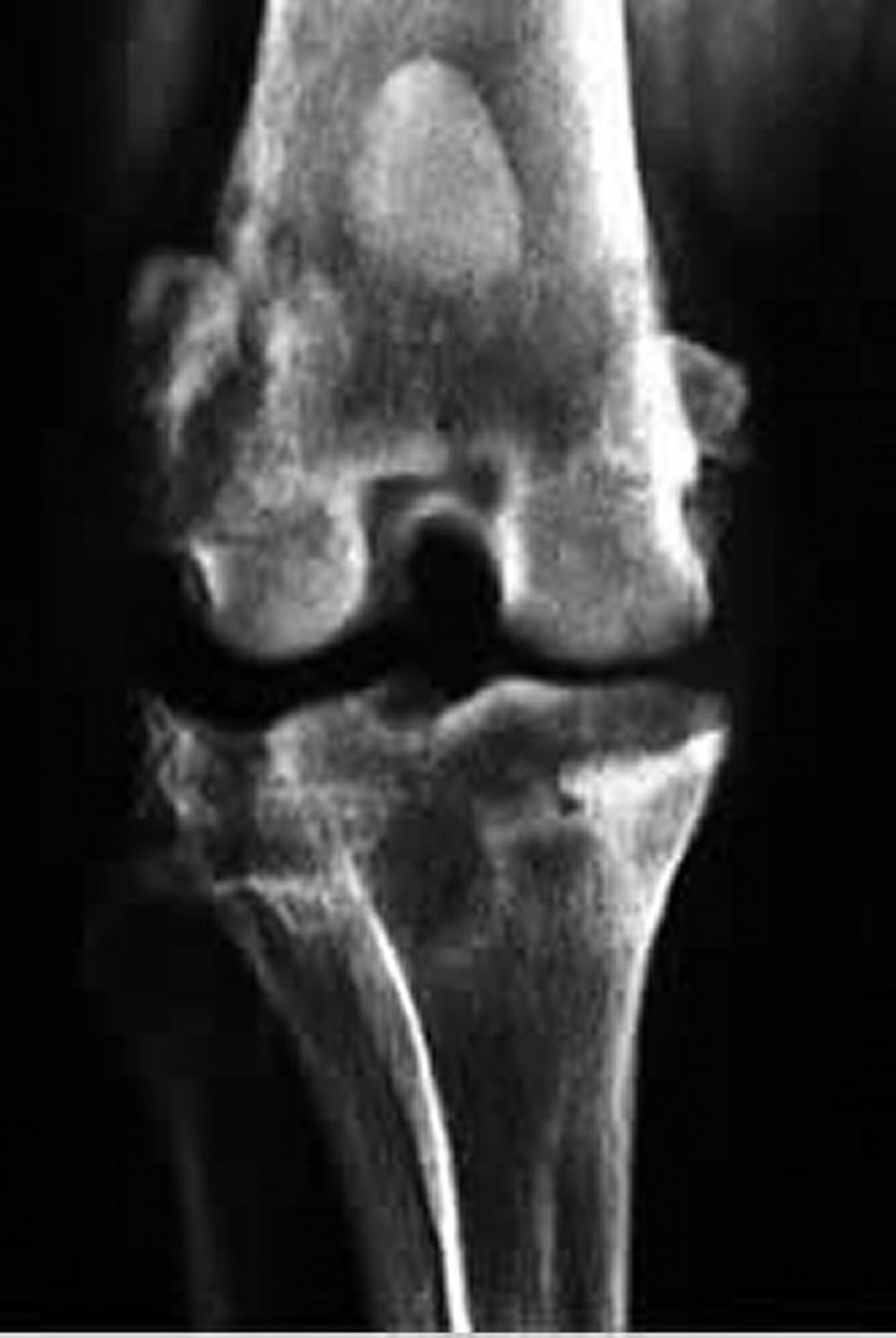Courtesy of Dr. Ronald Green.
Courtesy of Dr. Ronald Green.
Progressive deterioration of articular cartilage in diarthrodial joints is characterized by hyaline cartilage thinning, joint effusion, and periarticular osteophyte formation. Joint degeneration can be caused by trauma, infection, immune-mediated diseases, or developmental malformations. The inciting cause initiates chondrocyte necrosis, release of degradative enzymes, synovitis, and continued cartilage destruction and inflammation. Abnormal cartilage congruency and joint capsule anatomy can further lead to alteration in normal joint biomechanical function. Pain and lameness develop secondary to joint dysfunction or muscle atrophy and to limb disuse. Joint degeneration can be seen in both dogs and cats.
Clinical signs of degenerative joint disease include lameness, joint swelling, muscle atrophy, pericapsular fibrosis, and crepitation. Radiographic changes in the joint include joint effusion, periarticular soft-tissue swelling, osteophytosis, subchondral bone sclerosis, and possibly narrowed joint space. Arthrocentesis may be unremarkable or yield minor changes in color, turbidity, or cell counts of synovial fluid.
Treatments can be medical or surgical. Nonsurgical therapies include weight reduction, controlled exercise on soft surfaces, and therapeutic application of warm compresses to affected joints. NSAIDs (eg, aspirin, etodolac, carprofen, deracoxib, meloxicam, firocoxib, tepoxalin) reduce pain and inflammation. Caution is advised with longterm NSAID usage in dogs. The most frequently cited adverse effects include GI problems such as inappetence, vomiting, and hemorrhagic gastroenteritis. A carprofen-associated hepatopathy in Labrador Retrievers has also been reported. Corticosteroids also suppress prostaglandin synthesis and subsequent inflammation, but short-term use is advised to prevent iatrogenic hyperadrenocorticism, cartilage degeneration, and intestinal perforation. Joint-fluid modifiers such as glycosaminoglycans or sodium hyaluronate may prevent cartilage degradation.
Surgical options include joint fusion (arthrodesis), most frequently performed on the carpus and tarsus; joint replacement, such as total hip replacement; joint excision, such as femoral head and neck osteotomy; and amputation. Prognosis is variable and depends on the location and severity of the arthropathy.
